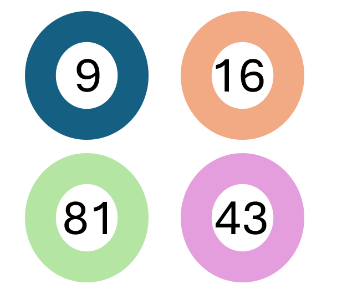
Which of the four images does not belong in the set, and why?
This task can be done in any classroom with any grade and any level of learner. You can use numbers, pictures, words, graphs, and so on.
The teacher started this routine early in the school year and did it for a week or two every day as a math warm-up with the whole class. After a week or two, routines were set, and they did this task one or two times a week so other warm-ups could also then be infused into the classroom.
To start the class, the teacher projected a picture onto the screen that consisted of four different images. This was a whole-class activity and learners were asked to find similarities between three of the images, which would then exclude the fourth one. To begin, the teacher modelled an example. Learners were encouraged to collaborate with their elbow partner or tablemates. Early on, as routines were being established, the teacher gave extra time for teams to collaborate and unpack their thinking. As a class, they also discussed norms of collaboration, such as seeking diverse perspectives, building on each other’s ideas to deepen thinking, practising active listening, and contributing to the common goal—in this case, determining which one doesn’t belong. As a class, they also unpacked how sharing ideas within and across groups was productive collaboration versus “cheating” (which came up in conversation). These early-developed norms of collaboration were ones they continued to revisit in many contexts throughout the year.
Each time the class was assigned the “Which one doesn’t belong?” task, after a few minutes of collaboration time, the teacher asked learners to offer possible answers and the reasons behind them. The teacher explained that if they disagreed with an answer or were unsure of how it made sense, they could respectfully question it and ask the learner to further explain their evidence or reasoning. To start, a few hands went up to answer, but after hearing some possible solutions, explanations, and the evidence for them, more and more ideas were triggered in learners and more and more hands popped up.
One of the places for celebration with this type of task is it provides an entry point for every learner. Even if it’s a very complicated trigonometry graph, all learners can find something that is different about the fourth image. It can also serve as an opportunity for the teacher to help support and offer related math vocabulary and concepts, in turn helping learners practise naming the concepts and ideas they are uncovering.